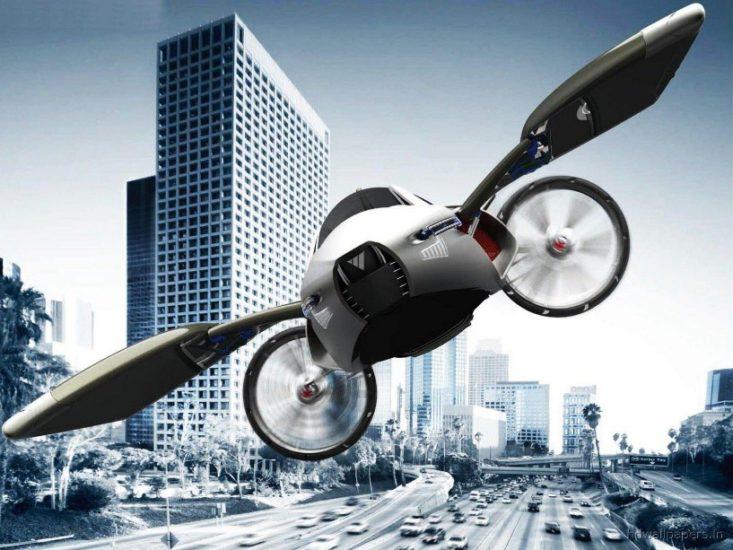Urban Air Mobility: The Legal Challenges on the Horizon

In the 21st century, technology can evolve at breakneck speeds. Legislators and regulators are sometimes challenged to manage those new technologies and keep pace with their advances. With the impending evolution (revolution?) in urban air mobility (UAM), we were curious how the legal and regulatory landscape is evolving – and will need to evolve – to support UAM.
To gain some insight and foresight – beyond the visual line of sight (BVLOS), legally speaking – AeroCar Journal spent time with Dr. Timothy Ravich, MBA (Embry-Riddle University), JD. As an associate professor and interim chair of the aviation law studies department in the College of Community Innovation and Education at the University of Central Florida and a Florida Bar Board Certified Aviation Lawyer, Dr. Ravich has more than 20 years’ experience in aviation law studies. 
Here’s what we learned:
ACJ: Which laws might need to be changed to accommodate UAM? How so?
Dr. Ravich: Of every area of the law, property law may be most impacted by UAM operations. This not only means ground-based issues, such as zoning, but also above-ground issues, such as airspace usage rights. Insurance laws, environmental laws, intellectual property, and personal injury laws also may need to adapt to UAM operations and concepts. UAM operations will not merely require existing laws to change, but may also require lawmakers to imagine entirely new regulatory frameworks to accommodate novel aviation operations.
ACJ: What new laws might need to be enacted to accommodate UAM?
Dr. Ravich: The law traditionally lags behind technology and innovation. This was true with cars, refrigeration, radio broadcasting, open heart surgery, and COVID-19 vaccines, and it will be true in the UAM space.
That said, thanks to some hard lessons learned with drones, the U.S. federal government has implemented what are referred to as “performance-based” regulations designed to promote, rather than stifle, innovation. Such performance-based rules depart from traditional, prescriptive frameworks and allow engineers to achieve regulatory approval by demonstrating key aspects of their creations. This approach offers great flexibility without a corresponding decline in regulatory scrutiny. More imaginative rules, such as Part 23 of the Code of Federal Regulations (CFR), will be important going forward.
ACJ: How might state and federal authorities bridge the gap that currently exists between state and federal agencies and their respective regulations for air and ground transportation operations?
Dr. Ravich: There is a constant tug-of-war between state and federal authorities when it comes to UAM regulation. After all, UAM operations are projected to occur almost entirely within state and even intra-city boundaries; yet, the U.S. federal government (via the Federal Aviation Aviation) is authorized to exert its jurisdiction in the national airspace (generally defined as 500 feet above ground level).
Nevertheless, opportunities for collaboration exist. For example, many issues impacting UAM operations are interagency in nature and demand effective coordination and governance to be successful.
Additionally, cybersecurity implicates the missions of the FAA and Departments of Homeland Security, Justice, and Defense. The development of innovative public-private-partnerships (P3) will also be important. In all, there are opportunities to work together and the current regulatory environment seems to suggest that regulators and regulator actors are mutually incentivized to cooperate to build out a new UAM ecosystem.
ACJ: How might liabilities and regulations change with the implementation of AI?
Dr. Ravich: The extent to which the law will impose liability on robots is very much emerging and an issue that is quickly becoming real rather than theoretical. For now, the law is likely to impose liability on the producer of an artificially intelligent system. Litigation involving Tesla and Boeing (e.g., the 737-MAX MCAS system) are examples of this.
ACJ: Will cities have a say as they do in licensing taxis and their drivers?
Dr. Ravich: The certification and registration of UAM aircraft and airmen (i.e., pilots) is, and likely will remain, a matter of federal law. But cities almost certainly will have a say in the location of vertiports and UAM-related infrastructure.
ACJ: As UAM matures, what laws might need to be enacted to keep up with unexpected consequences?
Dr. Ravich: As mentioned, the law lags behind technology. For purposes of this question, however, it might be said that the law should lag behind technology. Sometimes, writing laws today for tomorrow’s technologies has the undesirable effect of stifling or constraining innovation. Creating laws today with appropriate flexibility and breadth to allow for unexpected circumstances is wise, therefore. Suffice it to say that laws which are written broadly stand a good chance of finding application to unexpected events in the future.
Want to continue to stay up-to-date about the latest developments in the eVTOL industry? Subscribe to AeroCar Journal now. It’s FREE (for a limited time)! Join us on Twitter for the latest news, analysis, and insight about the eVTOL industry. AeroCarJ


